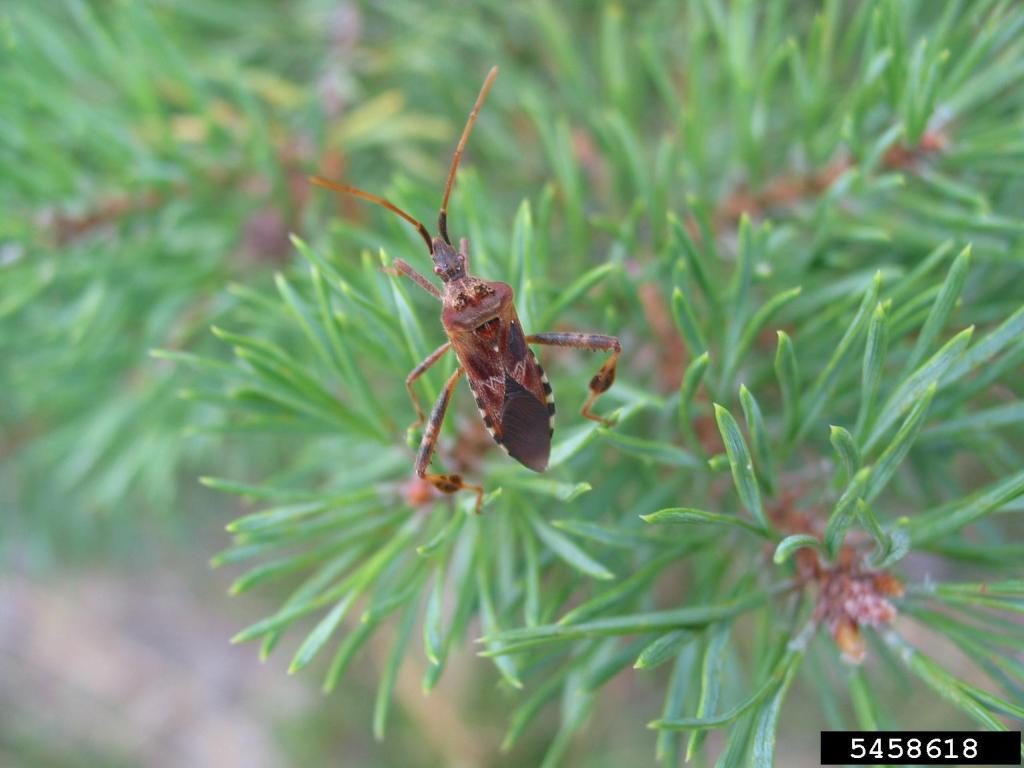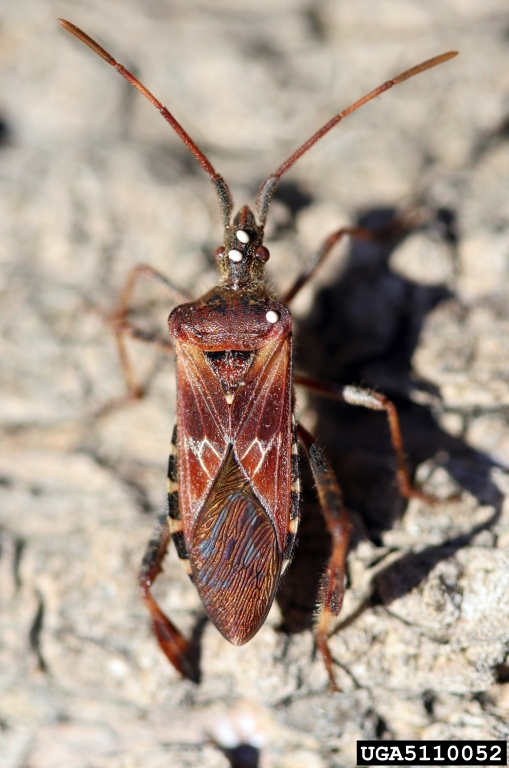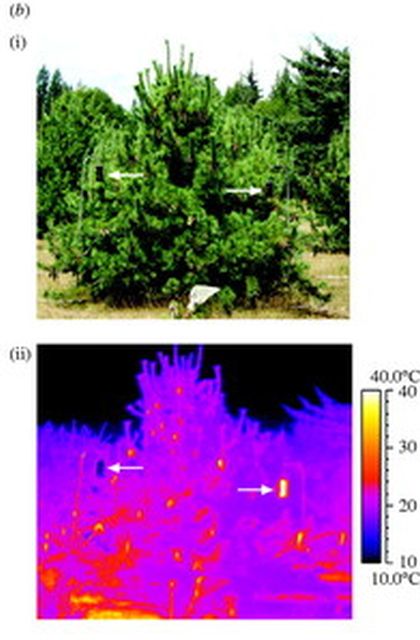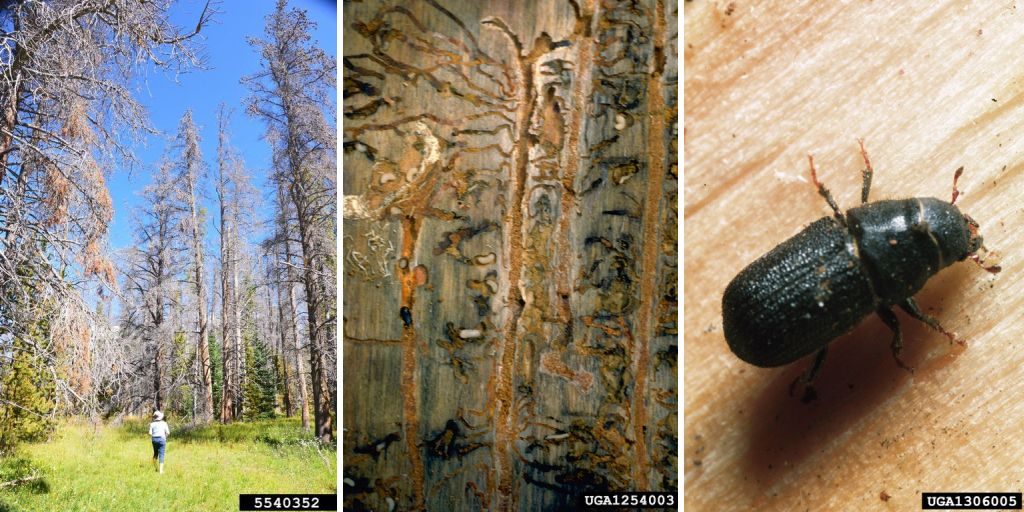
Back in 2008 a team of scientists made an amazing discovery: the western conifer-seed bug uses infrared sensors to find his favorite food.

The western conifer-seed bug (Leptoglossus occidentalis) is a North American sucking beetle that resembles a stink bug, though he’s not in the stink bug family. Ornately marked and 1/2 to 3/4 inch long (16-20 mm), he feeds on the sap of developing pine cones. This causes the seeds in the cones to wither which is only a minor problem in western forests but a big deal at pine seed orchards.
The seed bug used to be confined to temperate forests of the Pacific coast but has naturally expanded his range all the way east to Nova Scotia. In the past 20 years he’s been accidentally imported into Europe, Chile, and Japan so there’s international interest in how this bug finds pine cones at a distance.
The 2008 study led by Stephen Takács, Infrared radiation from hot cones on cool conifers attracts seed-feeding insects, found that pine cones emit infrared light at all levels and the western conifer-seed bug can “see” it.
Pine cones emit infrared light because they’re warmer than the rest of the tree by almost 60 degrees F. These photos from the study, taken in normal and infrared light, explain: “The temperature bar to the right of the paired images reveals that cones are up to 15°C warmer than foliage under high-cloud conditions.”

To prove that the bug is attracted to infrared, researchers set up infrared emitters shaped like pine cones (photos below). Did the bug approach them? Yes, it did. Could the bug find the cones when his IR sensors were experimentally blocked? No he could not.
As the study explains:

Here, we show that the western conifer seed bug, Leptoglossus occidentalis Heidemann (Hemiptera: Coreidae), a tissue specialist herbivore that forages during the photophase and feeds on the contents of seeds within the cones of many conifers (Blatt & Borden 1999; Strong et al. 2001), uses IR radiation from developing cones as a long-range foraging cue. We present data revealing that (i) cones are warmer and continuously emit more near-, mid- and long-range IR radiation than needles, (ii) seed bugs possess IR receptive organs and orient towards experimental IR cues, and (iii) occlusion of the insects’ IR receptors impairs IR perception.
— Infrared radiation from hot cones on cool conifers attracts seed-feeding insects, Stephen Takács et al, Royal Society Publishing
Apparently the world looks very different to a western conifer-seed bug. For him the pine cones really stand out while the rest of the world is boring.
postscript: NOTE that the western conifer-seed bug (Leptoglossus occidentalis) is not the scourge of our western pine forests. The forests are being killed by a completely different native bug — the mountain pine beetle (Dendroctonus ponderosae) — whose larvae make galleries under the bark and kill the tree from inside. Below: Pines killed by the mountain pine beetle, Galleries under the bark, and the mountain pine beetle.

photo credits: Click on the captions to see the originals.
* Infrared images from study at Royal Society 2008.0742, Creative Commons license
* Western conifer-seed bug photos from Wikimedia Commons
* Mountain pine beetle row of photos: #5540352: Kill at Deadman Road, CO, William M. Ciesla, Forest Health Management International, Bugwood.org, #UGA1254003, Galleries, William M. Ciesla, Forest Health Management International, Bugwood.org, #UGA1306005, mountain pine beetle, Dendroctonus ponderosae, Ron Long, Simon Fraser University, Bugwood.org
This topic was inspired by a 2008 article from Nature’s Crusaders blog: Pine Beetle Uses Infrared to Find Next Meal